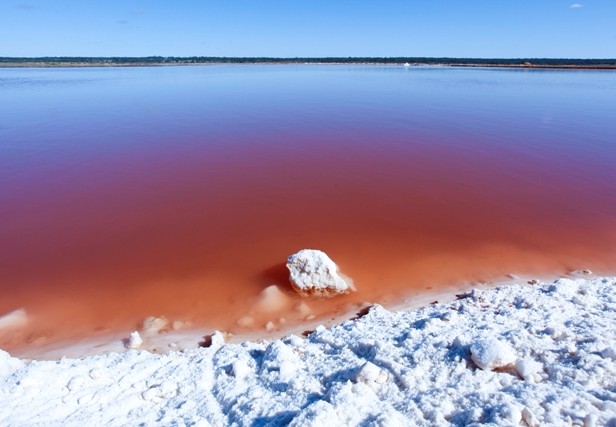Can you cut 1 Tonne of carbon pollution out of your life?
Take the challengeThis is a 1 Million Women community guest post from Laura Trotta.
It's one of the trendiest condiments and takes pride of place in the centre of most foodie's kitchen tables, but it's a far cry far from being the clean, natural product we perceive it to be. I'm talking Himalayan Rock Salt and in this post you'll discover why there's no place for it in Australian pantries.....
In recent years there's been a lot of hype around Himalayan Rock Salt, primarily around its flavour and reported health benefits. Sure, some of this attention is warranted, but if you live in Australia, eating Himalayan Rock Salt just doesn't make environmental sense, especially when there's locally produced mineral salts you can consume in its place.
So let me share six reasons why you should end your love affair with Himalayan Rock Salt:
1. Himalayan Rock Salt is Mined
Himalayan Rock Salt is extracted from the Khewra salt mine in Pakistan, not sourced from the pristine Himalayan Mountains like the name implies. This involves using conventional mining methods (with their associated environment impacts including land disturbance and greenhouse gas emissions) to extract a non-renewable resource, which leads to the next point.

Image: Turquoise-energy
2. Himalayan Rock Salt is a Finite Resource
Himalayan Rock Salt is a non-renewable, finite resource estimated to have formed 800 million years ago. Despite estimates that salt reserves are in the millions of tonnes, once depleted, they will be gone. For good.
3. Himalayan Rock Salt Has Huge Food Miles
Himalayan Rock Salt travels around 11,000 kilometres from its source in Pakistan to dinner tables in Australia which is some serious "food miles". Food miles equals greenhouse gas emissions. Enough said.

Image: Naturalsalthealing
4. Himalayan Rock Salt Isn't The Only Mineral Salt Available
Much of the appeal of Himalayan Rock Salt comes from the fact that it contains trace minerals like sulphur, magnesium, potassium and calcium that just aren't present in sea salt. Here's the thing though…… there are locally-produced salts that are bursting with all these minerals too.
5. Himalayan Rock Salt Isn't The Only Pretty Salt Available
I know, the pink orange colour sure has the WOW factor and makes a statement on your kitchen table. But there are several locally-produced salts that are also a gorgeous pink colour!
6. Himalayan Rock Salt Isn't The Only Tasty Salt Available
Sure Himalayan Rock Salt offers a flavour sensation that table salt struggles to match, but there's several Australian salts that also pack a punch where flavour is concerned.
So what is a better alternative to Himalayan Rock Salt?
If you're after a mineral salt, it's worth researching the growing range of Australian salts produced from naturally-saline surface and groundwater resources.

Image: The Murray River
In addition to being jam-packed with trace minerals essential for health, they also taste amazing and are a gorgeous pink colour. If you choose mineral salts produced in the Murray-Darling basin your purchase also helps to combat the environmental issue of inland salinity in Australia's Food Bowl. Talk about win win!
So if you're after a local salt that looks pretty, tastes fabulous, is good for you and helps address an environmental issue of national significance, look no further than Australia's growing range of mineral salts which you can find at Biome.
About The Author: Laura Trotta is an environmental engineer, a multi-award winning eco-living educator and is on a mission to make green mainstream. She loves bushwalking and scuba diving and lives with her husband and young sons in Outback South Australia.
Read this next: Lessons learnt from the longest study on happiness
